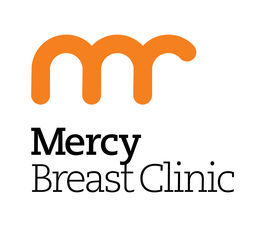Central Auckland, East Auckland, North Auckland, South Auckland, West Auckland > Private Hospitals & Specialists >
Mercy Breast Clinic
Private Service, Breast, Radiology
Today
Description
Mercy Breast Clinic specialises in assessment and treatment of breast lumps, breast pain, breast cancer and other breast health concerns as well as breast surgical procedures. We partner with our patients throughout their journey from initial consultation, through diagnostic imaging and diagnosis; all in one place.
The approach to diagnosing breast problems or ruling out disease is often a complex one which requires specialist input and integration of symptoms and information with imaging results. At Mercy Breast Clinic we aim to provide you with the best possible breast care through a "one stop" clinic experience where you can undergo tests including:
- Mammogram, 2D and 3D Tomosynthesis
- Breast Ultrasound
- Breast Biopsy
- Cyst Aspiration
The choice of tests depends on your age, breast density type and your presenting symptom. You will gain a result on the same day, and if required we can arrange for you to be assessed by a breast specialist surgeon. Results from your tests can then be correlated together and interpreted with your actual symptom to best arrive at a diagnosis and management plan.
The team includes specialist nurses, breast radiologists, mammographers, sonographers and breast surgeons. We also have access to our wider Mercy Radiology services for any additional tests such as MRI or PET CT scans and have close links with pathologists, plastic & reconstructive surgeons and oncologists. The overall aim is to provide you with high-standard, efficient and personalised care for your breast health, from experts in the field.
Staff
The Team
- Breast Specialist Nurses - are experienced breast care nurses who are on site to support patients and their whānau through diagnosis and treatment as required.
- Medical Imaging Technologists (MITs) or Mammographers - our experienced team perform your mammography examinations and liaise with the radiologist on your behalf.
- Radiologists - are specialist doctors who read and understand your mammography imaging and perform ultrasound scans on site. They interpret the results of the images, discuss them with you and send a report to your doctor.
- Specialist Breast Surgeons - consult in the clinic and patients are referred to them from the radiologist or their doctor.
- An Oncoplastic Surgeon - also consults at the clinic who can perform breast reconstruction and breast augmentation surgery.
Consultants
-
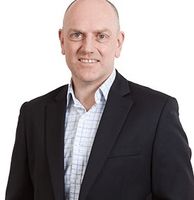
Mr Stephen Benson
Oncoplastic Breast Surgeon
-

Dr David Benson-Cooper
Radiologist
-

Dr Magdalena Biggar
Specialist Breast & Endocrine Surgeon
-
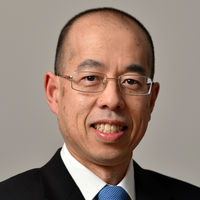
Dr Trevor Chan
Radiologist
-

Mr Isaac Cranshaw
General and Oncology Surgeon, Breast Endocrine Melanoma Sarcoma
-

Dr Sugania Reddy
Radiologist
-
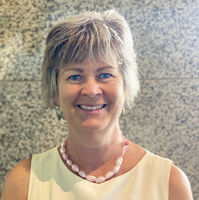
Dr Margaret Weston
Radiologist
-
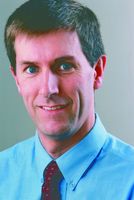
Dr Jeremy Whitlock
Radiologist
Ages
Youth / Rangatahi, Adult / Pakeke, Older adult / Kaumātua
How do I access this service?
Referral Expectations
Appointments must be made for all Mammography, Ultrasound and Consultations with Specialists. Please contact us directly to book or you can do this yourself by visiting our on-line portal.
Patients can self refer for routine screening mammogram, a referral is required for your breast ultrasound.
If you feel you have a new concern we would encourage you to visit your GP in the first instance who can arrange for a direct referral to us for mammography imaging and specialist assessment. We will endeavour to see you as soon as possible.
Phone and talk to our receptionists who will refer you to the breast care nurse or radiologist if necessary.
Fees and Charges Description
Please contact us on 09 623 0347 or email mbc@radiology.co.nz for pricing details.
Mercy Breast Clinic is a Southern Cross Affiliated Provider for a range of services.
Please contact us for further details.
Hours
| Mon – Fri | 8:00 AM – 5:00 PM |
|---|
Public Holidays: Closed ANZAC Day (25 Apr), King's Birthday (3 Jun), Matariki (28 Jun), Labour Day (28 Oct), Auckland Anniversary (27 Jan), Waitangi Day (6 Feb), Good Friday (18 Apr), Easter Sunday (20 Apr), Easter Monday (21 Apr).
Procedures / Treatments
When it comes to early detection and evaluating breast changes, mammography is first in line. Regular mammography screening attributes to a 35% reduction in breast cancer death rates, making those check-ups all the more important. Our specialised digital mammogram system is thorough and painless: an x-ray of the breast is taken, producing high-resolution images, emitting minimal doses of radiation. Mammography detects in two ways: screening and diagnosis Screening mammogram – This x-ray detects breast cancer that is too small to be felt, has no symptoms and is performed on patients with no complaints. Diagnostic mammogram – This x-ray investigates any suspicious changes shown in a screening mammogram, and is performed on patients presenting symptoms – such as a lump, pain or nipple discharge. In New Zealand 90-95% of women diagnosed with breast cancer have no family history. Therefore, booking in for an annual mammography if you’re aged 40-50 and every two-years if you’re 50+ is essential. We also recommend annual breast examinations by a GP or specialist for added peace-of-mind. Does it Hurt? The vast majority of women report that mammography is mildly uncomfortable, but not painful. Women who have tender breasts premenstrually are advised to delay mammography until after the period finishes. If you have had a painful mammogram in the past, please tell us - with improved techniques and our experienced staff, painful mammograms are now very uncommon at Mercy Breast Clinic. What to Expect Taking a high quality mammogram is a very specialised task and our female technologists are all well trained. Two x-rays are taken of each breast while the breast is held firm by a compression paddle. The compression prevents blurring from movement in the tissue and leads to a big reduction in the x-ray dose. It also helps to spread the breast tissue out, making the mammogram easier to read. At Mercy Breast Clinic we believe it is important that you are given your results as soon as possible, so there is always a radiologist present to check the films and discuss the results with you immediately. After the mammograms are checked it is sometimes necessary to take extra mammograms or to check the breast with ultrasound.
When it comes to early detection and evaluating breast changes, mammography is first in line. Regular mammography screening attributes to a 35% reduction in breast cancer death rates, making those check-ups all the more important. Our specialised digital mammogram system is thorough and painless: an x-ray of the breast is taken, producing high-resolution images, emitting minimal doses of radiation. Mammography detects in two ways: screening and diagnosis Screening mammogram – This x-ray detects breast cancer that is too small to be felt, has no symptoms and is performed on patients with no complaints. Diagnostic mammogram – This x-ray investigates any suspicious changes shown in a screening mammogram, and is performed on patients presenting symptoms – such as a lump, pain or nipple discharge. In New Zealand 90-95% of women diagnosed with breast cancer have no family history. Therefore, booking in for an annual mammography if you’re aged 40-50 and every two-years if you’re 50+ is essential. We also recommend annual breast examinations by a GP or specialist for added peace-of-mind. Does it Hurt? The vast majority of women report that mammography is mildly uncomfortable, but not painful. Women who have tender breasts premenstrually are advised to delay mammography until after the period finishes. If you have had a painful mammogram in the past, please tell us - with improved techniques and our experienced staff, painful mammograms are now very uncommon at Mercy Breast Clinic. What to Expect Taking a high quality mammogram is a very specialised task and our female technologists are all well trained. Two x-rays are taken of each breast while the breast is held firm by a compression paddle. The compression prevents blurring from movement in the tissue and leads to a big reduction in the x-ray dose. It also helps to spread the breast tissue out, making the mammogram easier to read. At Mercy Breast Clinic we believe it is important that you are given your results as soon as possible, so there is always a radiologist present to check the films and discuss the results with you immediately. After the mammograms are checked it is sometimes necessary to take extra mammograms or to check the breast with ultrasound.
When it comes to early detection and evaluating breast changes, mammography is first in line. Regular mammography screening attributes to a 35% reduction in breast cancer death rates, making those check-ups all the more important.
Our specialised digital mammogram system is thorough and painless: an x-ray of the breast is taken, producing high-resolution images, emitting minimal doses of radiation.
Mammography detects in two ways: screening and diagnosis
- Screening mammogram – This x-ray detects breast cancer that is too small to be felt, has no symptoms and is performed on patients with no complaints.
-
Diagnostic mammogram – This x-ray investigates any suspicious changes shown in a screening mammogram, and is performed on patients presenting symptoms – such as a lump, pain or nipple discharge.
In New Zealand 90-95% of women diagnosed with breast cancer have no family history. Therefore, booking in for an annual mammography if you’re aged 40-50 and every two-years if you’re 50+ is essential. We also recommend annual breast examinations by a GP or specialist for added peace-of-mind.
Does it Hurt?
The vast majority of women report that mammography is mildly uncomfortable, but not painful. Women who have tender breasts premenstrually are advised to delay mammography until after the period finishes. If you have had a painful mammogram in the past, please tell us - with improved techniques and our experienced staff, painful mammograms are now very uncommon at Mercy Breast Clinic.
What to Expect
Taking a high quality mammogram is a very specialised task and our female technologists are all well trained. Two x-rays are taken of each breast while the breast is held firm by a compression paddle. The compression prevents blurring from movement in the tissue and leads to a big reduction in the x-ray dose. It also helps to spread the breast tissue out, making the mammogram easier to read. At Mercy Breast Clinic we believe it is important that you are given your results as soon as possible, so there is always a radiologist present to check the films and discuss the results with you immediately. After the mammograms are checked it is sometimes necessary to take extra mammograms or to check the breast with ultrasound.
A breast ultrasound allows specialists to dig a little deeper. Sometimes a mammogram, a physical exam or an MRI may show signs of breast abnormalities that require further investigation. Some patients may also have especially dense breast tissue, in both cases, an ultrasound is the next port of call. What to Expect Our ultrasound machine uses harmless high-frequency sound waves to produce sharp, high-contrast images of the internal breast structure. This allows us to distinguish between benign (non-cancerous) lesions and malignant (cancerous) growths. Ultrasound is a very safe type of imaging which is why it is used during pregnancy. After you lie down on the ultrasound bed, the Radiologist or Sonographer will spread a water-based jelly on your skin over the area to be examined. The ultrasound probe is then placed on the jelly, which is a sound conductor, to obtain the pictures. You will be completely unaware of the sound waves produced by the probe.
A breast ultrasound allows specialists to dig a little deeper. Sometimes a mammogram, a physical exam or an MRI may show signs of breast abnormalities that require further investigation. Some patients may also have especially dense breast tissue, in both cases, an ultrasound is the next port of call. What to Expect Our ultrasound machine uses harmless high-frequency sound waves to produce sharp, high-contrast images of the internal breast structure. This allows us to distinguish between benign (non-cancerous) lesions and malignant (cancerous) growths. Ultrasound is a very safe type of imaging which is why it is used during pregnancy. After you lie down on the ultrasound bed, the Radiologist or Sonographer will spread a water-based jelly on your skin over the area to be examined. The ultrasound probe is then placed on the jelly, which is a sound conductor, to obtain the pictures. You will be completely unaware of the sound waves produced by the probe.
A breast ultrasound allows specialists to dig a little deeper. Sometimes a mammogram, a physical exam or an MRI may show signs of breast abnormalities that require further investigation. Some patients may also have especially dense breast tissue, in both cases, an ultrasound is the next port of call.
What to Expect
Our ultrasound machine uses harmless high-frequency sound waves to produce sharp, high-contrast images of the internal breast structure. This allows us to distinguish between benign (non-cancerous) lesions and malignant (cancerous) growths. Ultrasound is a very safe type of imaging which is why it is used during pregnancy. After you lie down on the ultrasound bed, the Radiologist or Sonographer will spread a water-based jelly on your skin over the area to be examined. The ultrasound probe is then placed on the jelly, which is a sound conductor, to obtain the pictures. You will be completely unaware of the sound waves produced by the probe.
Not everyone who undergoes a breast biopsy has breast cancer, but it is the most accurate way to study cells close up. If an examination, mammogram or ultrasound reveals a lump in a patient's breast or suspect areas, a specialist may remove a sample of tissue to check for cancer. There is more than one biopsy procedure – some use a needle, some an incision. Our specialists will determine which is the best biopsy for you based on the size and location of the lump or suspicious area. Open Excisional A small incision (cut) is made as close as possible to the lump and the lump, together with a surrounding margin of tissue, is removed for examination. If the lump is large, only a portion of it may be removed. Fine Needle Aspiration and Core Needle Biopsy Both these procedures involve inserting a needle through your skin into the breast lump and removing a sample of tissue for examination.
Not everyone who undergoes a breast biopsy has breast cancer, but it is the most accurate way to study cells close up. If an examination, mammogram or ultrasound reveals a lump in a patient's breast or suspect areas, a specialist may remove a sample of tissue to check for cancer. There is more than one biopsy procedure – some use a needle, some an incision. Our specialists will determine which is the best biopsy for you based on the size and location of the lump or suspicious area. Open Excisional A small incision (cut) is made as close as possible to the lump and the lump, together with a surrounding margin of tissue, is removed for examination. If the lump is large, only a portion of it may be removed. Fine Needle Aspiration and Core Needle Biopsy Both these procedures involve inserting a needle through your skin into the breast lump and removing a sample of tissue for examination.
Not everyone who undergoes a breast biopsy has breast cancer, but it is the most accurate way to study cells close up. If an examination, mammogram or ultrasound reveals a lump in a patient's breast or suspect areas, a specialist may remove a sample of tissue to check for cancer.
There is more than one biopsy procedure – some use a needle, some an incision. Our specialists will determine which is the best biopsy for you based on the size and location of the lump or suspicious area.
Open Excisional
A small incision (cut) is made as close as possible to the lump and the lump, together with a surrounding margin of tissue, is removed for examination. If the lump is large, only a portion of it may be removed.
Fine Needle Aspiration and Core Needle Biopsy
Both these procedures involve inserting a needle through your skin into the breast lump and removing a sample of tissue for examination.
Surgery is the next step up in treating breast cancer and it can be an emotional, mental and physical journey for patients. Some women may not have undergone surgery before, some may be opting for preventative surgery, we understand that each patient is unique and must receive support that is akin to their situation. Our staff will be by your hand and on hand before, during and after your procedure. Before any of our patients undergo breast surgery, we ensure they are well equipped with all the information and guidance they need going forward. We also help organise and plan post-operative care, ensuring minimal stress and a smoother recovery. Simple or Total Mastectomy All breast tissue, skin and the nipple are surgically removed but the muscles lying under the breast and the lymph nodes are left in place. Modified Radical Mastectomy All breast tissue, skin and the nipple as well as some lymph tissue are surgically removed. Partial Mastectomy The breast lump and a portion of other breast tissue (up to one quarter of the breast) as well as lymph tissue are surgically removed. Lumpectomy The breast lump and surrounding tissue, as well as some lymph tissue, are surgically removed. When combined with radiation treatment, this is known as breast-conserving surgery.
Surgery is the next step up in treating breast cancer and it can be an emotional, mental and physical journey for patients. Some women may not have undergone surgery before, some may be opting for preventative surgery, we understand that each patient is unique and must receive support that is akin to their situation. Our staff will be by your hand and on hand before, during and after your procedure. Before any of our patients undergo breast surgery, we ensure they are well equipped with all the information and guidance they need going forward. We also help organise and plan post-operative care, ensuring minimal stress and a smoother recovery. Simple or Total Mastectomy All breast tissue, skin and the nipple are surgically removed but the muscles lying under the breast and the lymph nodes are left in place. Modified Radical Mastectomy All breast tissue, skin and the nipple as well as some lymph tissue are surgically removed. Partial Mastectomy The breast lump and a portion of other breast tissue (up to one quarter of the breast) as well as lymph tissue are surgically removed. Lumpectomy The breast lump and surrounding tissue, as well as some lymph tissue, are surgically removed. When combined with radiation treatment, this is known as breast-conserving surgery.
Surgery is the next step up in treating breast cancer and it can be an emotional, mental and physical journey for patients. Some women may not have undergone surgery before, some may be opting for preventative surgery, we understand that each patient is unique and must receive support that is akin to their situation. Our staff will be by your hand and on hand before, during and after your procedure.
Before any of our patients undergo breast surgery, we ensure they are well equipped with all the information and guidance they need going forward. We also help organise and plan post-operative care, ensuring minimal stress and a smoother recovery.
Simple or Total Mastectomy
All breast tissue, skin and the nipple are surgically removed but the muscles lying under the breast and the lymph nodes are left in place.
Modified Radical Mastectomy
All breast tissue, skin and the nipple as well as some lymph tissue are surgically removed.
Partial Mastectomy
The breast lump and a portion of other breast tissue (up to one quarter of the breast) as well as lymph tissue are surgically removed.
Lumpectomy
The breast lump and surrounding tissue, as well as some lymph tissue, are surgically removed. When combined with radiation treatment, this is known as breast-conserving surgery.
A sentinel node procedure is performed when specialists suspect cancer may have spread to a patient's lymph nodes. This involves a: Sentinel Node Study Sentinel Node Biopsy – During the procedure, a surgeon will study the sentinel node or nodes –or first few nodes – that filter fluid away from the breast. If there are cancer cells in the lymphatic system, the sentinel node is the most likely to contain them. If the sentinel node is clear of cancerous cells, there’s a good chance the other nodes are free of cancer too. Read more here
A sentinel node procedure is performed when specialists suspect cancer may have spread to a patient's lymph nodes. This involves a: Sentinel Node Study Sentinel Node Biopsy – During the procedure, a surgeon will study the sentinel node or nodes –or first few nodes – that filter fluid away from the breast. If there are cancer cells in the lymphatic system, the sentinel node is the most likely to contain them. If the sentinel node is clear of cancerous cells, there’s a good chance the other nodes are free of cancer too. Read more here
A sentinel node procedure is performed when specialists suspect cancer may have spread to a patient's lymph nodes.
This involves a:
- Sentinel Node Study
- Sentinel Node Biopsy – During the procedure, a surgeon will study the sentinel node or nodes –or first few nodes – that filter fluid away from the breast. If there are cancer cells in the lymphatic system, the sentinel node is the most likely to contain them. If the sentinel node is clear of cancerous cells, there’s a good chance the other nodes are free of cancer too.
When a breast has been removed (mastectomy) because of cancer or other disease, it is possible in most cases to reconstruct a breast similar to a natural breast. A breast reconstruction can be performed as part of the breast removal operation or can be performed months or years later. There are two methods of breast reconstruction: one involves using an implant; the other uses tissue taken from another part of your body. There may be medical reasons why one of these methods is more suitable for you or, in other cases, you may be given a choice. Implants A silicone sack filled with either silicone gel or saline (salt water) is inserted underneath the chest muscle and skin. Before being inserted, the skin will sometimes need to be stretched to the required breast size. This is done by placing an empty bag where the implant will finally go, and gradually filling it with saline over weeks or months. The bag is then replaced by the implant in an operation that will probably take 2-3 hours under general anaesthesia (you will sleep through it). You will probably stay in hospital for 2-5 days. Flap Reconstruction A skin flap taken from another part of the body such as your back, stomach or buttocks, is used to reconstruct the breast. This is a more complicated operation than having an implant and may last up to 6 hours and require a 5- to 7-day stay in hospital.
When a breast has been removed (mastectomy) because of cancer or other disease, it is possible in most cases to reconstruct a breast similar to a natural breast. A breast reconstruction can be performed as part of the breast removal operation or can be performed months or years later. There are two methods of breast reconstruction: one involves using an implant; the other uses tissue taken from another part of your body. There may be medical reasons why one of these methods is more suitable for you or, in other cases, you may be given a choice. Implants A silicone sack filled with either silicone gel or saline (salt water) is inserted underneath the chest muscle and skin. Before being inserted, the skin will sometimes need to be stretched to the required breast size. This is done by placing an empty bag where the implant will finally go, and gradually filling it with saline over weeks or months. The bag is then replaced by the implant in an operation that will probably take 2-3 hours under general anaesthesia (you will sleep through it). You will probably stay in hospital for 2-5 days. Flap Reconstruction A skin flap taken from another part of the body such as your back, stomach or buttocks, is used to reconstruct the breast. This is a more complicated operation than having an implant and may last up to 6 hours and require a 5- to 7-day stay in hospital.
There are two methods of breast reconstruction: one involves using an implant; the other uses tissue taken from another part of your body. There may be medical reasons why one of these methods is more suitable for you or, in other cases, you may be given a choice.
Implants
A silicone sack filled with either silicone gel or saline (salt water) is inserted underneath the chest muscle and skin. Before being inserted, the skin will sometimes need to be stretched to the required breast size. This is done by placing an empty bag where the implant will finally go, and gradually filling it with saline over weeks or months. The bag is then replaced by the implant in an operation that will probably take 2-3 hours under general anaesthesia (you will sleep through it). You will probably stay in hospital for 2-5 days.
Flap Reconstruction
A skin flap taken from another part of the body such as your back, stomach or buttocks, is used to reconstruct the breast. This is a more complicated operation than having an implant and may last up to 6 hours and require a 5- to 7-day stay in hospital.
Disability Assistance
Wheelchair access
Online Booking URL
Public Transport
The Auckland Transport website is a good resource to plan your public transport options.
Parking
Free off street patient parking is provided
Pharmacy
Contact Details
Mercy Breast Clinic, 15 Gilgit Road, Epsom, Auckland
Central Auckland
-
Phone
(09) 623 0347
Healthlink EDI
mercy cal
Email
Website
Use our online contact form
Book an appointmentMercy Breast Clinic
15 Gilgit Road
Epsom
Auckland
Street Address
Mercy Breast Clinic
15 Gilgit Road
Epsom
Auckland
Postal Address
PO Box 9056
Newmarket
Auckland 1149
Was this page helpful?
This page was last updated at 3:24PM on November 21, 2023. This information is reviewed and edited by Mercy Breast Clinic.

